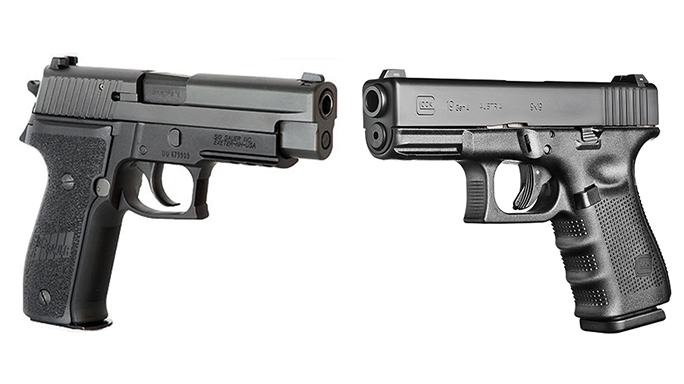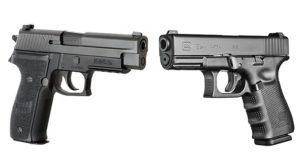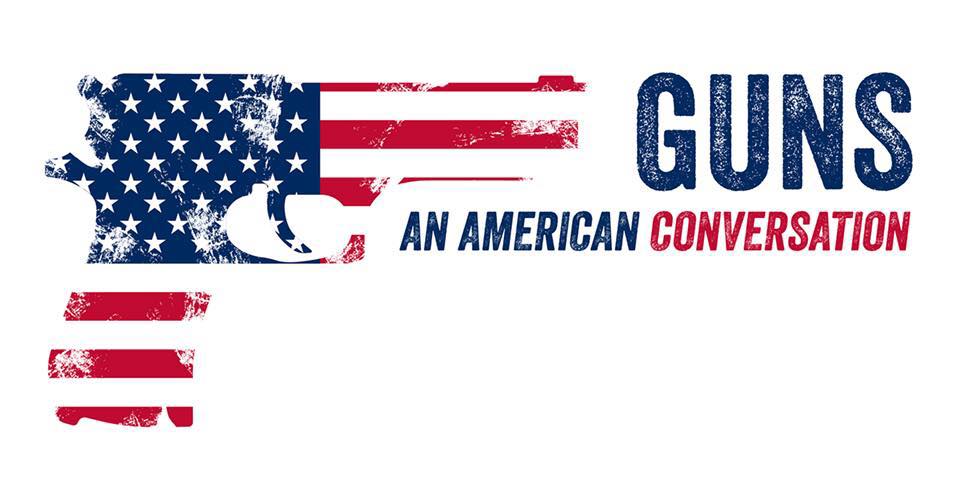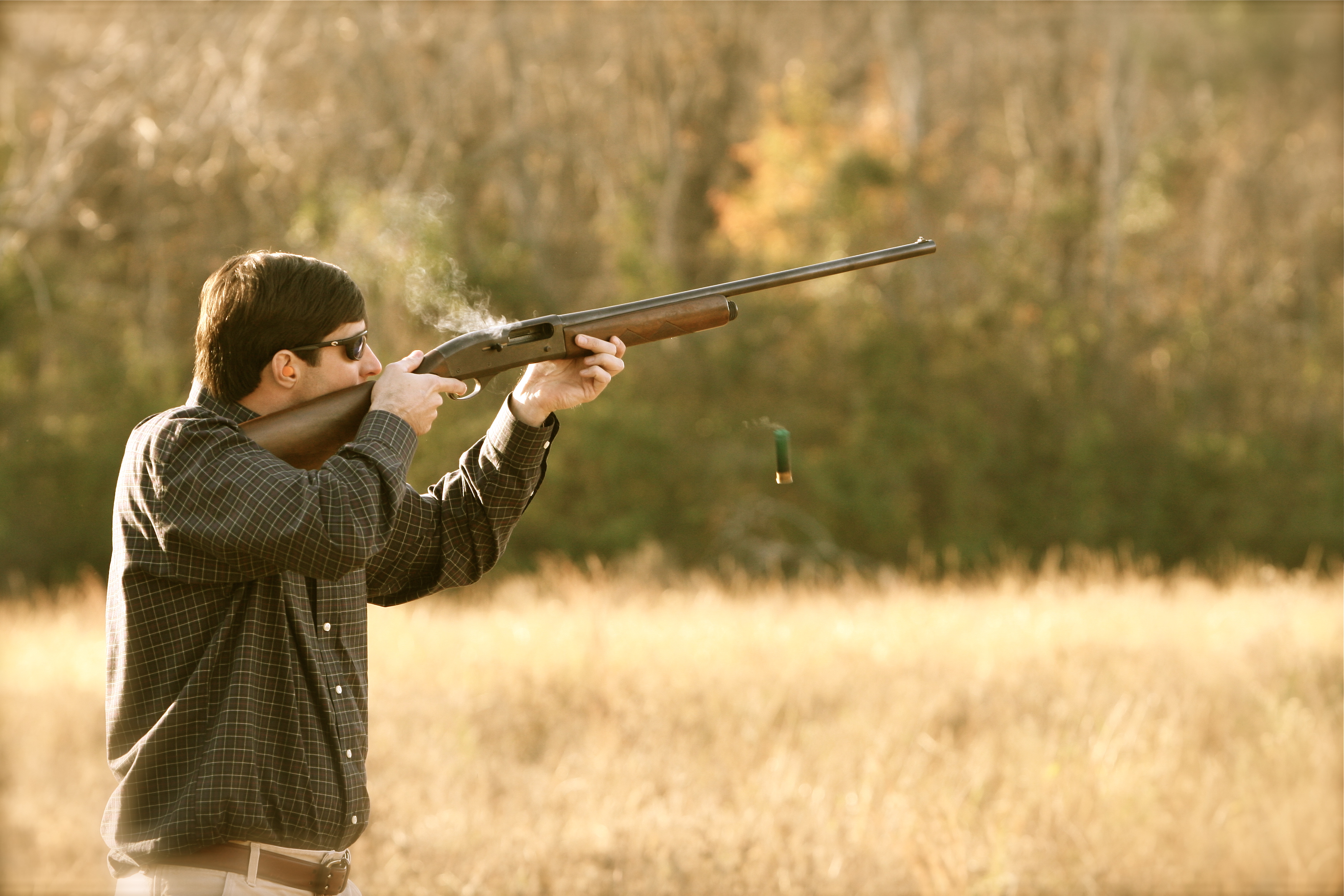For the month of April, the news outlet MLive and other outlets around the country, ran a program called “Guns: An American Conversation”. The idea behind this project was to get people communicating about gun violence, and entertain possible solutions. The framework was to remain respectful, give well-reasoned answers or stances, and, again, remain respectful. If we could take away different perspectives and different stances, then we would become closer to finding solutions.
Keep and Bear, LLC instructor Don Alley was one of those chosen to be a part of this conversation.
The group consisted of about 150 people total from around the country, with viewpoints spanning the spectrum of gun rights and gun violence. While the participants weren’t 100% respectful at all times, and were sometimes steadfast in their beliefs (Don included), the month long conversation certainly didn’t devolve to the typical Facebook vitriol so common elsewhere. In that, at least, the program was a success. Here is Don’s experience.
Initial thoughts
My initial thoughts, admittedly, was that a media outlet was setting up a group to reinforce via echo-chamber that gun rights were collectively granted, alterable, negotiable, and therefore were readily adjustable via consensus. At the very worst, I figured I’d end up being a lightning rod for individual rights by questioning what authority others had over my rights. (As my involvement in the project continued, I discovered that there were certainly those that held that exact viewpoint).
Guidelines for expectations of discourse were provide, which were easy enough to follow should discussion remain fact based, purpose-driven, and earnestly looking for answers.
The beginning
The month long session dove right in, somewhat predictably. There were many anti-gun people eager to make a difference by proposing ideas that they thought would reduce firearm related violence. These tended to trample the Second Amendment, and those proposing these ideas were alright with that.
There was more than a few members that made it clear that any law, any regulation, or any disqualifier to owning arms was more than acceptable to them. If an idea resulted in any firearm being banned, confiscated, or not for sale, they were clearly for it.
Conversely, there were other members who held the opposite viewpoint. Firearm ownership was an inherent right of a free people, and others do not have the authority to alter it. Anti-gunners were quick to point out that because infringement is currently occurring, that infringement is OK.
There were many in the middle, who were either unaware of the nature of a ‘right’, or felt that reasonable limits were acceptable. These people were, ultimately my target audience for conversation, and wanted to delve more deeply into this neutral/unfamiliar conscientious to understand and relate to them better. Fortunately, the best way to show the end-game of an anti-gun stance is to simply ask more questions. With a few leading questions, the motive becomes clear: control over others. Here were some more observations…
The ‘reasonable restrictions’ argument (part 1)
Anti-gunners use the notion that ‘reasonable restrictions’ are allowed by government to safeguard the public peace. Once the authority to restrict is thus established, they argue it’s just a matter of where those restrictions lie, and ‘we all’ get a say in that. There are a number of issues with this approach.
Anti-gunners like to equate the 1A to infringing the 2A. “You cannot yell Fire! in a crowded theater. This is an example of a reasonable restriction”, they like to argue. Thy are correct that you cannot do that, but they are incorrect calling it a reasonable restriction. It’s actually a crime called ‘inciting’. A ‘restriction’ in this case would be to make it so the word “fire” was illegal to utter. Other popular 1A crimes include slander, libel, and fraud. The system has taken these 1A-based actions and criminalized them because they can lead to physical or financial harm. Aside from these, the 1A is held in high public regard, and further limitations to the 1A are generally held unfavorably.
Likewise, 2A-based abuses are also crimes. These include assault, manslaughter, assault with a deadly weapon, and murder 1, 2, 3. These actions are already criminalized, and as such, if the 2A were held in the same regard as the 1A, further restriction would not be pursued, but the understanding that lawbreakers would be brought to justice.
‘Reasonable restrictions’ are not warranted if the action under scrutiny is already a crime.
The ‘reasonable restrictions’ argument (part 2)
Of interest in the ‘reasonable restriction’ argument, the SCOTUS case DC vs Heller clarified that the 2A is an individual right, but that the government had authority to restrict “unusual” firearms. Since recent estimates show that there are at least 2.4 million AR-15 style defensive carbines in private ownership in the USA, with who knows how many other ‘assault weapons’ (please forgive my use of the term) in private ownership, this style of firearm cannot be considered ‘unusual’, and the ruling would actually prohibit government entities from banning this particular arm.
The ‘restrictions are not infringement’ argument
Yes, they are, by definition. I posted a progression of a firearms transaction from total freedom to authoritarianism. It went like this:
- Total freedom: I walk into the gun store, choose the firearm I want, voluntarily transact, and leave with the firearm I’ve purchased.
- Add firearm restrictions: I walk into a gun store, choose the firearm I want (from a list of features the government has deemed I may purchase), voluntarily transact, and leave with the firearm I’ve purchased.
- Add background checks: I walk into a gun store, choose the firearm I want (from a list of features the government has deemed I may purchase), get NICS checked (ensure I am not on a list that the government has deemed not allowed to purchase a firearm), voluntarily transact, and leave with the firearm I’ve purchased.
- Add purchase permits: I first go to the government, take a test to prove I am eligible, wait on those results, get issued a purchase permit, I walk into a gun store, choose the firearm I want (from a list of features the government has deemed I may purchase), get NICS checked (ensure I am not on a list that the government has deemed not allowed to purchase a firearm), voluntarily transact, and leave with the firearm I’ve purchased.
- Add waiting periods: I first go to the government, take a test to prove I am eligible, wait on those results, get issued a purchase permit, I walk into a gun store, choose the firearm I want (from a list of features the government has deemed I may purchase), get NICS checked (ensure I am not on a list that the government has deemed not allowed to purchase a firearm), voluntarily transact, leave the gun store, wait 3 days to ‘cool off’, return, and leave with the firearm I’ve purchased.
- Add red flag laws: I first go to the government, take a test to prove I am eligible, wait on those results, get issued a purchase permit, I walk into a gun store, choose the firearm I want (from a list of features the government has deemed I may purchase), get NICS checked (ensure I am not on a list that the government has deemed not allowed to purchase a firearm), voluntarily transact, leave the gun store, wait 3 days to ‘cool off’, return, and leave with the firearm I’ve purchased, which I may keep only until such a time that the collective preference of society deems I am allowed to have it, and I must surrender them should a single judge deem it so. I will not be afforded due process, I will not be able to face my accuser, and I will not have a say in their disposition. I may have to prove myself worthy of exercising my right, and the state may make that proof as attainable or unattainable as it sees fit.
- Authoritarianism: Gun store? We outlawed those. Why do you need a gun? I am reporting you.
Each step above cumulatively infringes on a person’s right, and distances the freedom the 2A enumerates into a set of privileges and preferences, eventually ensuring that no firearms and no people are in the ‘approved set’.
Anti-gunners are quick to point out how ‘quick’ it is to get a firearm. You can walk in and walk out with one. This is as it should be when exercising a Right. What they don’t emphasize is that the person is run through a somewhat efficient database that is able to check ineligibility right away. Because something is ‘quick’ does not mean that it isn’t thorough or comprehensive.
Rejection of the slippery-slope argument
In logic, critical thinking, political rhetoric, and case law, is a consequentialist logical device in which a party asserts that a relatively small first step leads to a chain of related events culminating in some significant (usually negative) effect.
Anti-gunners like to call out the cautions and concerns of pro-gunners as being slippery slope arguments. “Just because we enact regulation now does not mean that we will enact more legislation later.”, they say.
Yes, it does. Yes, they will.
We had the 1934 National Firearm Act which effectively outlawed automatic weapons, short barrel rifles and shotguns, and suppressors. This was followed with the 1968 Gun Control Act, which regulated firearms as interstate commerce, restricted many firearms, and attempted to relegate firearm ownership as “sporting purpose” in origin and not militaristic in origin. From there, an 80’s era assault weapon ban attempted to prohibit ‘military style’ firearms. A myriad of state level and local bans have followed in the years since. We now have a retired SCOTUS judge calling for the repeal of the 2A, and multiple politicians introducing bills that outright ban firearms.
A slippery slope argument is no longer a logical fallacy when the slope has been proven to exist and is indeed slippery.
In fact, another participant used the “pieces of cake” argument to highlight the iterative, repeated infringement. He likened one’s rights to a cake. When someone came along and said “I will take a piece of your cake, but you get to keep the rest”, the cake owners acquiesced. When they came back for more, the cake owner protested but gave in. Now, with only a slice left, they are coming for it once again.
The anti-gunners were actually livid with this analogy. My take on it was that they were clearly exposed as incrementally infringing rights, and their call for “middle ground common sense” legislation was highlighted as another failure in a long history of gun control failures.
I asked “If we do another gun ban like you’re asking, can we add language to the bill that any future politician suggesting further bans shall be forcibly removed from his office, even upon pain of death, and those enforcing that removal have a full and complete pardon?” I did not get a reply.
The qualifications of those that would make you defenseless
This was actually a post that infuriated me the most. It was a ladies-only post, so I respected their space, but I still read it and took away what I could. The reason for my anger was how ill-informed some of the participants were regarding self defense. After exhibiting potentially lethal ignorance on the topic, they continued to use the group to talk about protective actions. Hint: If your personal protection strategy is based on ‘hope’, or ‘willful ignorance’, don’t try to impose your viewpoints on to others via gun control.
That being said, many/most of the participants cited situational awareness, staying in areas known to be safer, having some defense training, and many only go walking about with their dog.
Here are some of the personal protection strategies of some in the group:
- “I am disabled and ride an electric scooter. I feel that is my armor. I also carry a can of hairspray that will temporarily stop someone if sprayed in their eyes. I also have one of those really loud alarm buttons I can press to attract attention if needed.”
- “..I assume my world is essentially a safe place and should I be a victim of violence, it would be a random circumstance of being in the wrong place at the wrong time. I would never carry a gun.“
- “I also know some basic self defense just from watching some videos.” followed up with a question as to what videos she watches. She answered “The ones that pop up on my Facebook feed and Twitter“.
- “I was raised to use my house keys as weapons. Putting one or two between my knuckles to pierce my attacker and wound him. “
- “Protection of the female from male predators has been throughout our history and part of our present.. I don’t think carrying a gun will fix our future..“
Another prevalent topic was the need to ‘feel’ safe. Not ‘be’ safe, feel safe. This is a false measurable, as how one feels is unimportant when protective topics are addressed, yet the solutions offered throughout the project seemed to repeatedly be based on how to ‘feel safe’.
There were more than a few posts with women knowing a good bit of martial arts, carrying defensive firearms, and carrying pepper spray/gel, and again, there was a high degree of stated situational awareness.
There is, however, a danger in considering a vocal gun control proponent’s argument, however. They are, quite literally, arguing to make you defenseless. The ‘bait’, is that you will not need defense any more if all guns are taken away, but the sum of human history up to the invention of the firearm shows that theory to be in error. In fact, advent of the firearm helps ensure females are safer than they ever have been in history, as the device relies on a chemical reaction (the cartridge going off), rather than physical strength, to project protective force.
How gun owners are perceived
It has been my experience that gun owners view the American population in two groups:
- People who want violence eliminated (but the means in which this is accomplished varies greatly).
- Criminals.
During this month long project, it became clear that anti-gun people view Americans in 3 categories:
- People who are anti-gun and therefore want violence eliminated.
- Pro-gun people who are alright with violence, or are themselves criminals waiting to happen.
- Criminals.
This attitude was prevalent throughout the project, with gun owners sometimes outright vilified. One post even stated “another good guy with a gun, until he wasn’t” regarding an assaultive encounter under discussion.
I see this as the biggest divide on this issue. To the anti-gunner, the 2A is not really a right, it’s a road block to imposing their preference. It must be questioned, marginalized, scrutinized, and the founding fathers’ intent on it must be doubted. This is the only way it can be eroded. Then, they will have their way.
Until then, pro-gunners are apparently one step away from becoming criminals.
I, for one, will continue to see American’s in the 2-category model I first mentioned, and I will continue to reject and vehemently oppose the notion that gun owners are violence proponents simply by virtue of employing a means of protection.
The obligatory NRA bashing
This is the time honored tradition of the anti-gunner, but also represents one of the biggest wins this project offered. The topic started with the usual “NRA wants dead babies” statements. Not put out there as fact, but rather that the NRA is complicit in every shooting occurring in the USA.
Fortunately, there were many pro-2A people who were able to shed some reason on it. Some of these points were:
- Issues you (anti-gunners) are for have lobbies. Why do you not oppose them? Are lobbies evil or not?
- Why do you feel the NRA is racist? (Apparently Ted Nugent’s opinions translate to the entirety of the organization.)
- Who is the NRA made up of? (Answer: Between 5 and 10 million Americans willing to open their wallet and their junk mail boxes to support their cause).
- For your causes, you (anti-gunners) get corporate support (such as Soros funded protests). Why is it that the NRA getting corporate support from related industry members vilified?
As I mentioned, I felt this was out biggest ‘win’ in the discussion. It became very clear that the answer to “Why is the NRA vilified” is “Because they are effective.” Based on the responses of many centrist viewpoints in the group, they felt the NRA and its members were unfairly targeted and vilified for supporting their cause.
Gun owners should have to ____________
I mentioned this one in last month’s post, and it remained prevalent throughout the month long project. The restrictions proposed, and the solutions offered seemed to largely revolve around this format. ‘Solutions’ varied from carrying extra liability insurance (ensuring gun rights are only for the wealthy), to mandatory safety training (enabling anti-gun areas to impose very difficult testing), to waiting periods, to more invasive background checks, to even getting clearance from a psychologist, the solution was clear: gun owners must bear the brunt of freedom infringement for the mere feeling of safety in others.
One of the moderator’s favorite participants had an op-ed piece published in his local paper, suggesting that liability insurance be required for gun owners. It was heartening to find his op-ed received a near-90% disapproval to his ill-thought suggestions.
Built-in bias
The program was moderated such that only a few new topics were introduced each day, and conversation swirled around those. During this month, a homeowner used an AR-15 to stop multiple people invading his home. This link was rejected as a talking point. The same day, another gun control school walk out occurred, where one student was shot in the ankle. This article was rushed through to the top of the line and published.
The AR-15 link was rejected ‘because we already know guns like this can be used defensively’. But, don’t we already know school walkouts occur? Don’t we already know sometimes someone in a large group suffers injury?
While the conversation was free on each topic, the conversation was indeed steered by what topics were brought up.
Conclusion
I’ve come away with a somewhat hopeful feeling: That truth, logic, safety, and true freedom lie on the side of the pro-gun community. We rely on our training to protect us during an altercation, and the justice system to follow up. The anti-gun side relies on the justice system upfront to make them safe, but their disarmament goals ensure that failures within the justice system will continue to harm peaceable Americans.





 was limited to Glocks only. So I pulled my Glock 22 in .40 cal from the back of my safe, grabbed my pistol bag and extra magazines and headed to the range. In hindsight I should have realized I had a problem the moment I picked up my spare mags; two of them were 10 rounders left over from the 1994 AWB! Are you starting to see how I’ve let this pistol languish? Any way I headed out the competition and honestly didn’t do too bad in the 1st two events. The 3rd and final event was the metal plates. Where the first two events could mask my poor marksmanship thanks to larger targets, the plates meant I’d have to be on target with my sights and missed shots would not go unnoticed. 4 strings of fire, 6 plates each and I only hit 15 with 44 rounds! Now I’ve been shooting for a long time and I am very familiar with all manner of firearms and how to handle them. But that doesn’t mean I’ve spent enough time on all of them to understand their nuances and how they shoot (high, low, right, left?).
was limited to Glocks only. So I pulled my Glock 22 in .40 cal from the back of my safe, grabbed my pistol bag and extra magazines and headed to the range. In hindsight I should have realized I had a problem the moment I picked up my spare mags; two of them were 10 rounders left over from the 1994 AWB! Are you starting to see how I’ve let this pistol languish? Any way I headed out the competition and honestly didn’t do too bad in the 1st two events. The 3rd and final event was the metal plates. Where the first two events could mask my poor marksmanship thanks to larger targets, the plates meant I’d have to be on target with my sights and missed shots would not go unnoticed. 4 strings of fire, 6 plates each and I only hit 15 with 44 rounds! Now I’ve been shooting for a long time and I am very familiar with all manner of firearms and how to handle them. But that doesn’t mean I’ve spent enough time on all of them to understand their nuances and how they shoot (high, low, right, left?).
